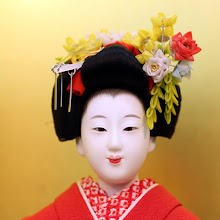If you are a guest of the tea ceremony you are expected to know the importance and the tradition of the ceremony as well as the host. All guests are first led to a waiting room while the host prepares for the ceremony. Once the host is prepared the guests are lead through a dew garden, where no flowers grow. The garden is meant to cleanse the guests of the dust of the world. After walking through the garden they sit upon a special bench to await the appearance of the host.
Before greeting the guests the host must cleanse his hands and mouth with fresh water in a stone basin. The guests are then welcomed with a bow, but no words are spoken. The guests will then enter in the order of assistant host, main guests and then the rest of the guests. When the guests pass under chumon (middle gate) they are leaving the physical world and entering the spiritual world that is represented by tea. The guests then enter the tea house through a sliding door that is only three feet high. Once inside everyone will bow in order to show that they are all equal.
The tea house has no decoration except for one hanging scroll. The scroll is chosen by the host and is meant to represent the tea ceremony. The guests will then each admire the scroll, tea kettle, and the hearth. The guests are then seated in the same order that they entered, the host will then seat themselves and the greetings will begin.
Everything used in the tea ceremony has a different meaning. The water represents yin and the hearth represents yang. The host will have a tea bowl which will contain the tea whisk, the tea cloth, and the tea scoop. The host will then purify the tea container and the tea scoop with a fine silk cloth. The items will then be dried with the tea cloth. The host will then place three scoops of tea into the tea container for each guest. Hot water is then added to the bowl in order to make a paste. The paste is stirred with the whisk until it resembles a cream soup.
The bowl is then passed to each guest who examines the tea and the bowl and then takes a sip. The bowl is then passed back to the host who cleans the bowl and all of the articles used. Each item is then passed to the guests for examination as many of the items used in the tea ceremony can be generations old. Once the ceremony is complete the guests will discuss the ceremony and the items that they examined.

I am extremely impressed along with your writing abilities, Thanks for this great share.
ReplyDelete